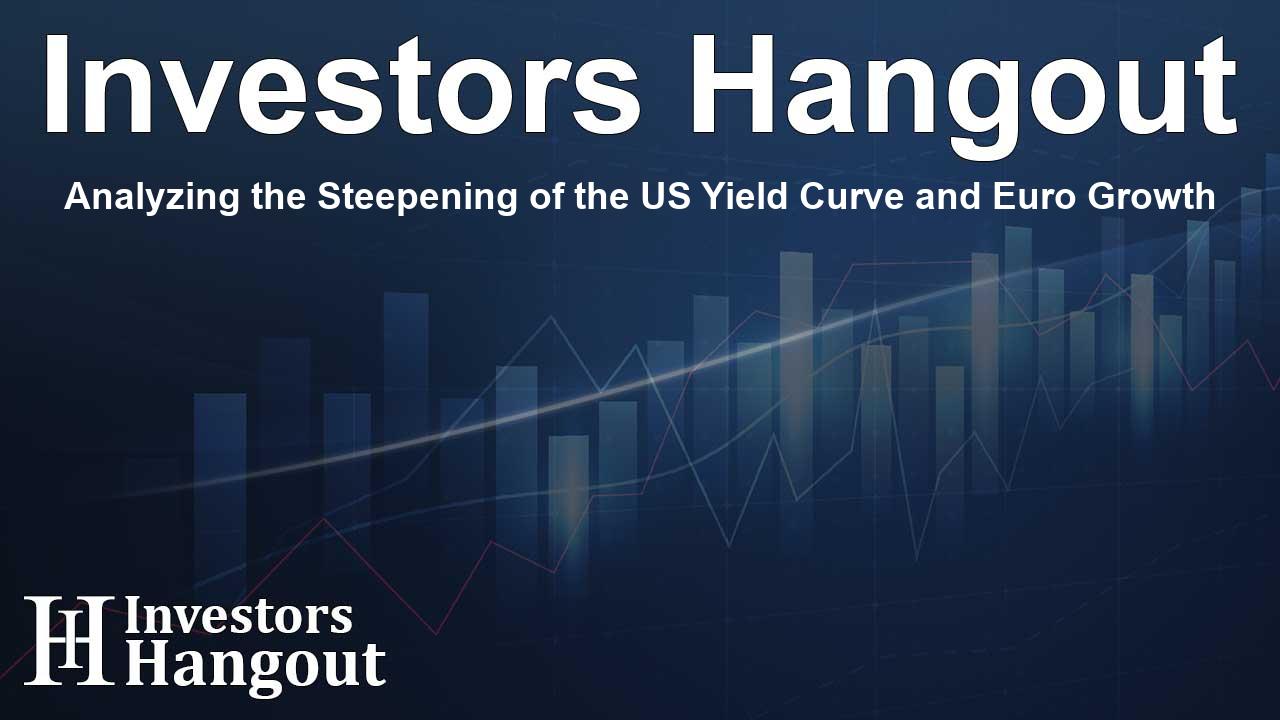Analyzing the Steepening of the US Yield Curve and Euro Growth

The Anticipation of a Steeper US Curve
As we observe trends in the US yield curve, it seems likely that the upward thrust of rates will emanate from both ends of the spectrum, creating a steeper curve overall. The inherent volatility we see reflects shifting economic conditions, particularly as growth surprises in the eurozone shine a light on potential upward movements in European rates.
Understanding Yield Dynamics
The current yield for the 10-year note stands at around 4.2%, reminiscent of pre-Liberation Day figures. This yield has seen fluctuations, dipping to 3.85% due to heightened recession concerns, followed by a quick rise to 4.6%. Recently introduced tariffs have reignited previous uncertainty, but their influence seems muted compared to earlier periods. market participants are now bracing themselves for rising inflation rates, even as the economy grapples with its post-pandemic recovery.
Looking to the future, one must consider the probability of inflation reaching 4% by late 2025. The financing of the fiscal deficit doesn't seem to worry long yields at present, yet they cannot entirely dismiss the impending inflation. A critical question arises: will the 10-year yield fall back towards 4% amidst this inflation backdrop? While it's possible, such a move would inevitably create tension due to the negative implications surrounding inflation and the fiscal deficit. As we analyze these factors, the curve's steepening remains a likely course of action despite ongoing economic challenges.
Indicators of a Steepening Curve
Historically, the front end of the yield curve has shown a tendency to trend downward when rates appeared high, particularly in the 4% range. The prospect of the 10-year yield potentially streaking lower might present an opportunity, yet the context of rising prices suggests a complex path ahead. In due course, one should prepare for the possibility that the 10-year yield may rise above current levels in response to mounting pressures.
The Eurozone: A Different Perspective
Contrasting the US, the eurozone's economic data displays signs of recovery, which presents a bearish outlook for euro rates. After a rough patch indicated by previous forecasts, there's been a gradual uptick in positive data surprises. Notably, recent GDP figures exceeded expectations, albeit modestly, signaling resilience in the face of uncertainty.
Positive Growth Trends
Upcoming indicators, such as Italian and French PMIs, may bolster this positive trajectory further. A potential trade deal with the US could alleviate uncertainties, paving the way for a smoother growth path moving forward. It’s essential to remain optimistic about the potential improvements ahead as these developments unfold.
Evaluating Volatility and Future Projections
The stability witnessed in euro rates aligns with low volatility measures. Current implied volatility for 10Y EUR rates has dipped to levels not seen since 2022, continuing a consistent downtrend. In contrast to US rates, short-term uncertainty appears limited, although external US developments still influence the overall outlook.
Global Market Considerations
It's essential to recognize the interconnectedness of the global market; euro rates are affected by US yield movements. If pressures from inflation and issuance push US Treasury yields higher, that could contribute to a significant shift in euro swap rates, potentially exceeding the 2.8% threshold later this year.
Frequently Asked Questions
What is happening with the US yield curve?
The US yield curve is expected to steepen due to economic dynamics indicating both ends of the spectrum will contribute to rising rates.
How has the eurozone economy been performing?
The eurozone exhibits positive growth trends with consistent positive surprises in economic data, suggesting resilience and potential upward movements in euro rates.
What are the implications of rising inflation for the 10-year yield?
Rising inflation creates tension regarding the future direction of the 10-year yield, as it may prompt concerns around fiscal deficits and overall economic stability.
How do US developments affect euro rates?
US economic events continue to influence euro markets, as rising US Treasury yields may impact euro swap rates significantly.
What indicators should we monitor for future trends?
Key indicators include GDP growth, PMIs, and inflation data, all of which will help gauge trajectory for both the US and eurozone economic landscapes.
About The Author
Contact Dominic Sanders privately here. Or send an email with ATTN: Dominic Sanders as the subject to contact@investorshangout.com.
About Investors Hangout
Investors Hangout is a leading online stock forum for financial discussion and learning, offering a wide range of free tools and resources. It draws in traders of all levels, who exchange market knowledge, investigate trading tactics, and keep an eye on industry developments in real time. Featuring financial articles, stock message boards, quotes, charts, company profiles, and live news updates. Through cooperative learning and a wealth of informational resources, it helps users from novices creating their first portfolios to experts honing their techniques. Join Investors Hangout today: https://investorshangout.com/
The content of this article is based on factual, publicly available information and does not represent legal, financial, or investment advice. Investors Hangout does not offer financial advice, and the author is not a licensed financial advisor. Consult a qualified advisor before making any financial or investment decisions based on this article. This article should not be considered advice to purchase, sell, or hold any securities or other investments. If any of the material provided here is inaccurate, please contact us for corrections.
